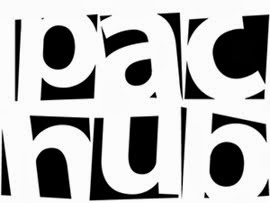Du Bois in
Our Time
Odile Tevie
On 6 March the chiefs of Fante signed the Bond of 1844 with
British appointed governor of the coastal states. The chiefs had ceded
authority over some judicial matters to British officials. This relationship gradually
became one of dependency and protection at the time when the Fante[ba-j1] were seeking respite from the incessant
attacks from the Ashante. The signing of the bond marked the beginning of a relationship,
which in the coastal states becoming part of the Crown colonies in 1886. The
metamorphoses of the relationship forced by other events, such as the Berlin
Conference that partitioned the continent of Africa and ushered in the
beginnings of the colonial rule of many Western Europeans states over several
African countries.
Let us fast-forward 170 years later to 2014 and 50 years
after the death of W.E.B. Du Bois, a vocal and energetic civil rights leader
whose writings, speeches, activism, and support of Pan-Africanism drew Kwame
Nkrumah into his circle of friends. The
latter, Ghana’s first president, came to understand more about the need to
fight for the rights of the people of the then Gold Coast under the tutelage of
W.E.B. Du Bois. The legacy of W.E.B. Du Bois cannot be looked at in a Ghanaian
context without looking at the role he played in during our independence
struggle. Not be taken lightly is W.E.B. Du Bois’s renouncement of his American
citizenship for a Ghanaian one.
There are quite a number of strands that have come into play
with the Du Bois in Our Time project.
The idea of this project was to employ a multi-prismed lens to examine the legacy
of the man—W.E.B. Du Bois. Indeed just as how the prism refracts light, this
project involves artists, academics, writers, scholars, and Pan-African enthusiasts. The hope was that each, in their own
approach, might re-learn and reflect on the relevance and importance of Du Bois
in present day Ghana.
As the director of a foundation, which is working against
all odds to encourage young artistic nascent talents in Ghana, this also serves
as a rare opportunity for young artists to be pitched onto a stage with
internationally acclaimed artists and professionals. Additionally, this project
presented an opportunity for the artists to explore new mediums in their
artistic practice that they would ordinarily not have engaged. During this time, the participants had access
to copious amounts of information is available about W.E.B. Du Bois in Ghana,
and is concentrated at the Du Bois Centre, which houses Du Bois’s personal
library and the general library.
The project which started at University Museum of Contemporary
Art, University of Massachusetts Amherst, Massachusetts in 2012, has culminated
in a trans-Atlantic exploration and sharing of our connections to the great
mind of a legendary person. The UMCA museum is the largest repository-physical
and online of resources of W.E.B. Du Bois—this includes his writings and select
correspondence. Through this collaboration we have provided platforms for
several dialogues to take place between and within several communities inside and
outside Ghana. In September 2013, the exhibition Du Bois in Our Time opened at the UCMA, following the
commissioning of 8 artists who presented their works and with several programmes
held around the launch of the exhibition. This included artist talks, panel discussions
and workshops. Similar events took place during the Du Bois in Our Time Accra programme.
We are lucky to have the full support of the Du Bois Centre
in this project. Its director, Mr. Ato Keelson gave the artists full access to all
the rooms in the Du Bois Centre to absorb the very essence of W.E.B. Du Bois. It
is no surprise then that with their final works, they have in turn ‘moved in’
and are feeling very comfortable in the home and personal space of Du Bois- his
bedroom, library, living room.
This ‘occupation’ has been achieved in my opinion largely because
of the new media workshop led by Jude Anogwih and Emeka Ogboh of Video Art
Network (VAN) Lagos. Other key elements
of the project include a site-specific commission in the Du Bois Centre by Mary
Evans, an internationally renowned artist and the creation of Pan-African
Creative Hub, a new online platform intended to mentor young persons across the
creative arts.
The opening dates for the exhibition were chosen to stir up
the consciousness of the audience. On the eve of Ghana’s independence declaration
on 5 March 1957 there was such a deep sense of hope and expectation among the
people. The questions we are asking about the legacy of W.E.B. Du Bois today should
be reflected upon very deeply by every Ghanaian
Kwame Nkrumah believed strongly that our struggles and
subsequent emancipation could not be fully attained for our nation unless it
was linked to the freedom of all African nations. This exhibition goes a long way to show that
the examination cannot end and it is not until the freedom and emancipation
envisaged is felt by all citizens of Ghana that can we truly declare total
freedom.
If the struggle still continues then what part shall you
play?cc
